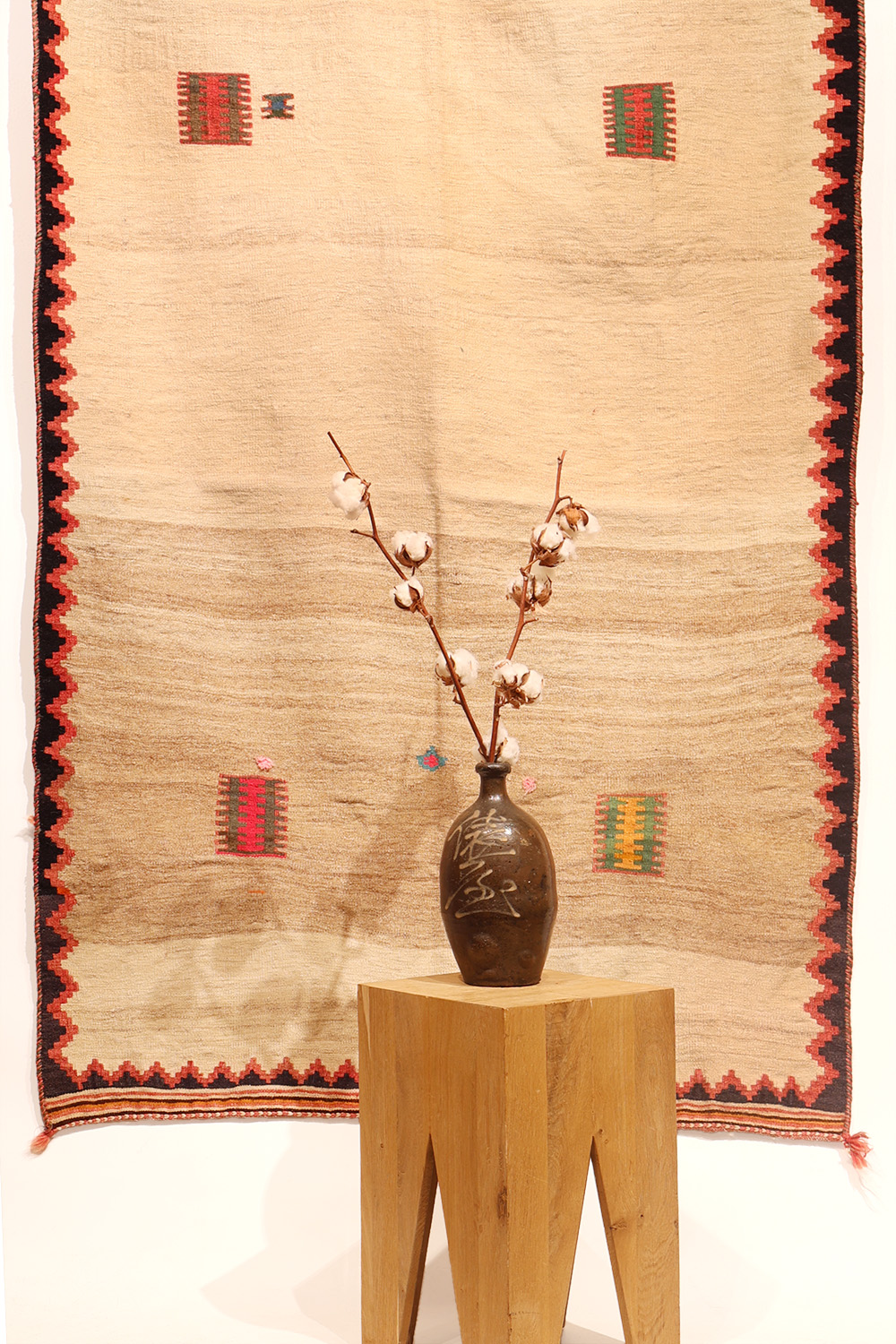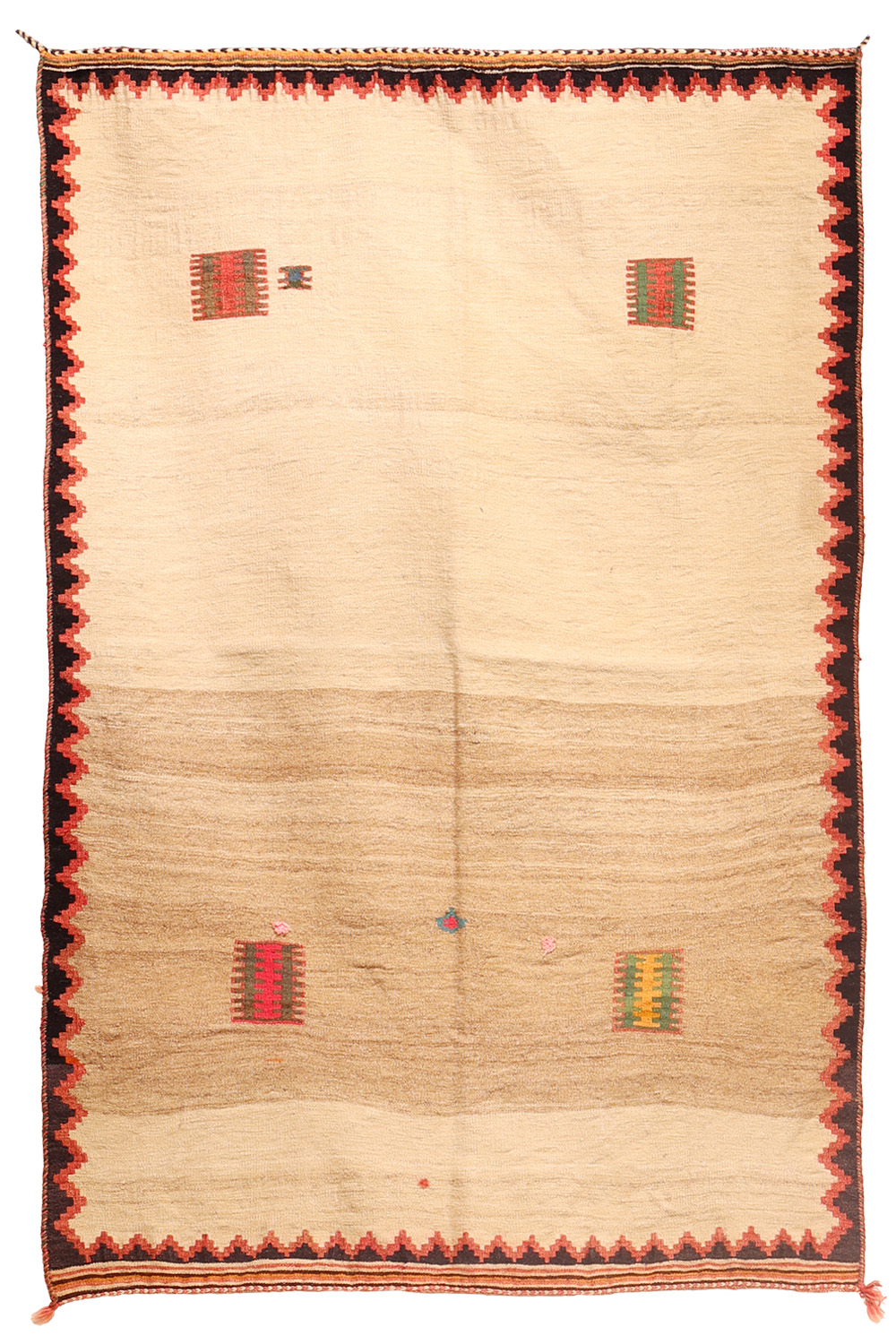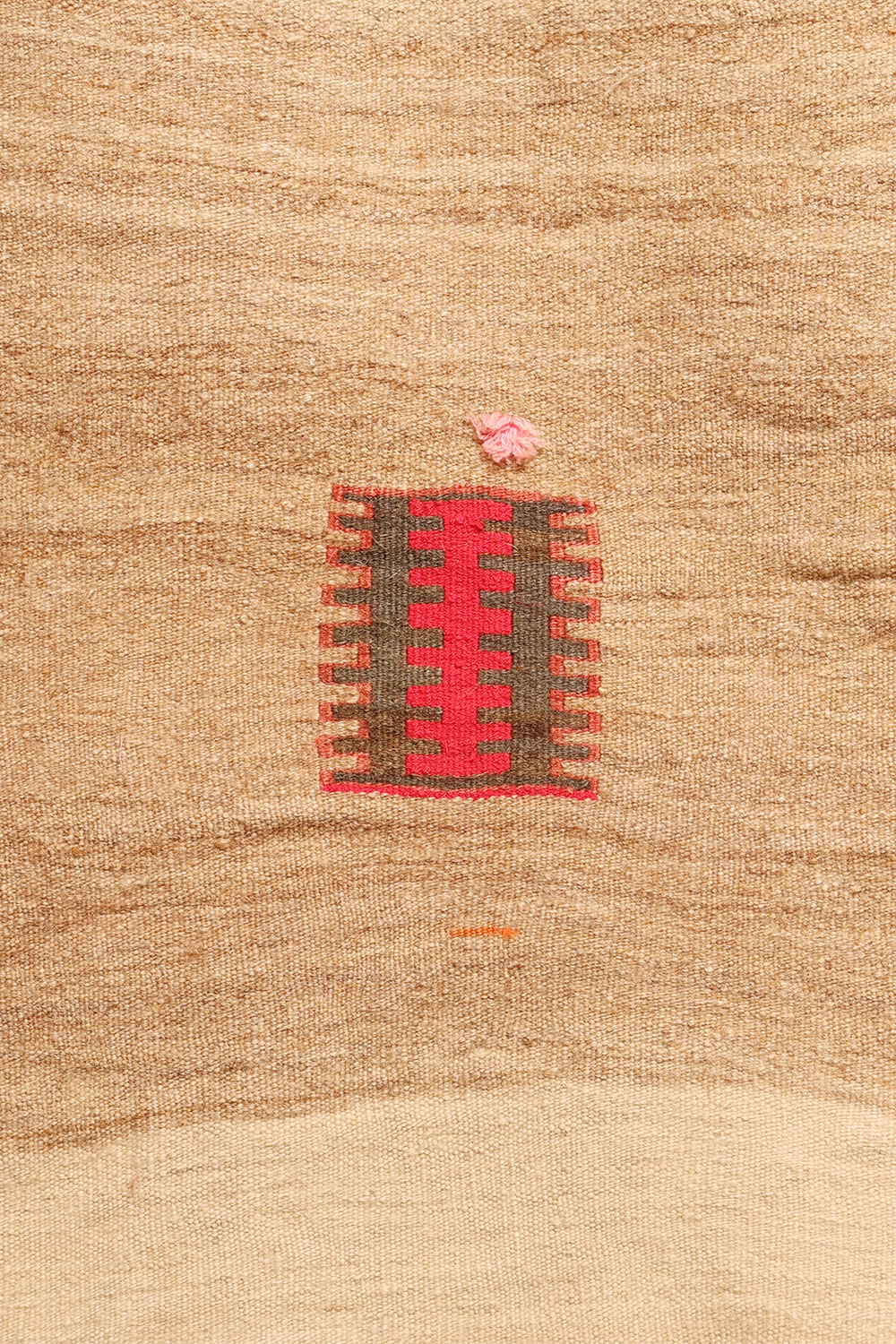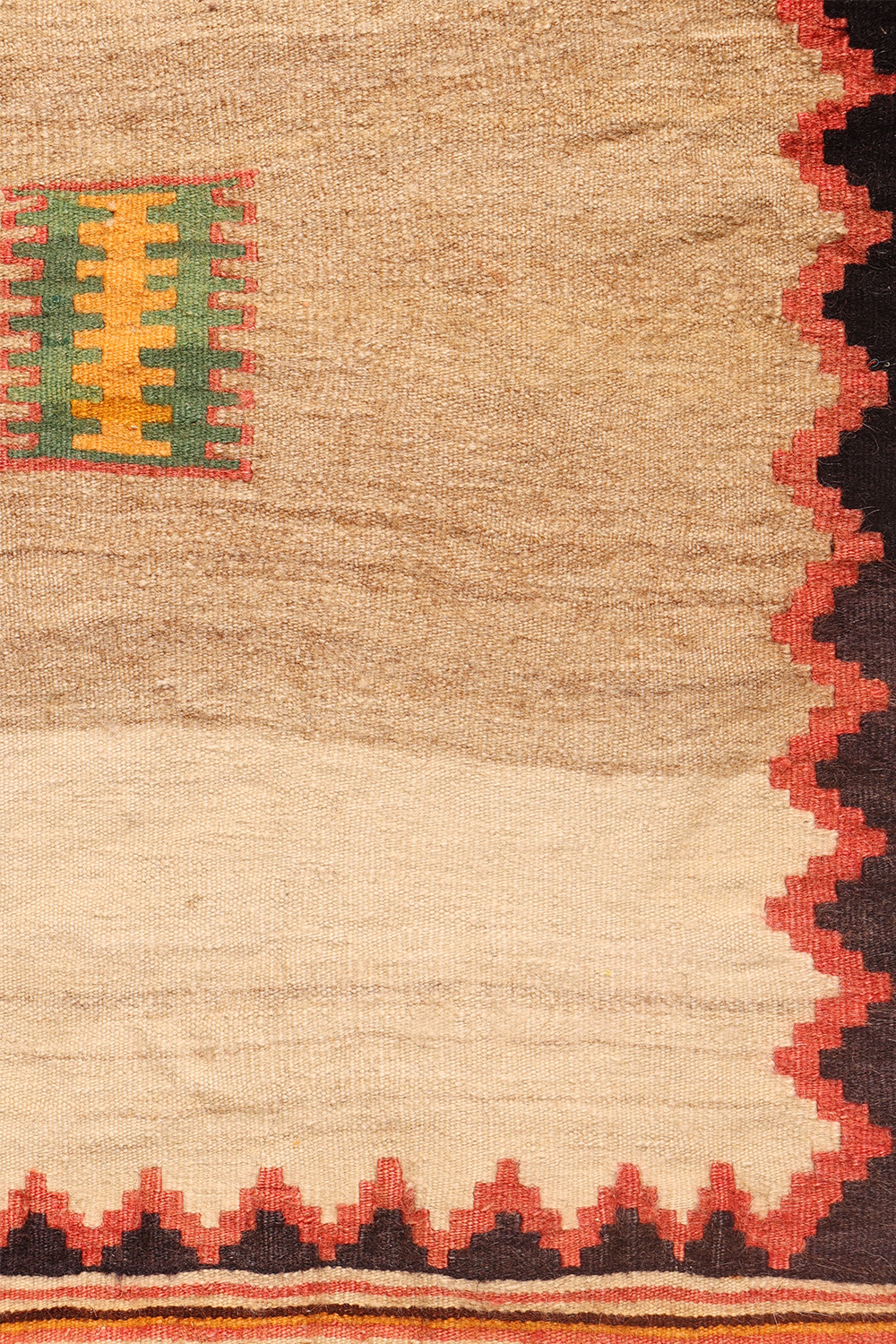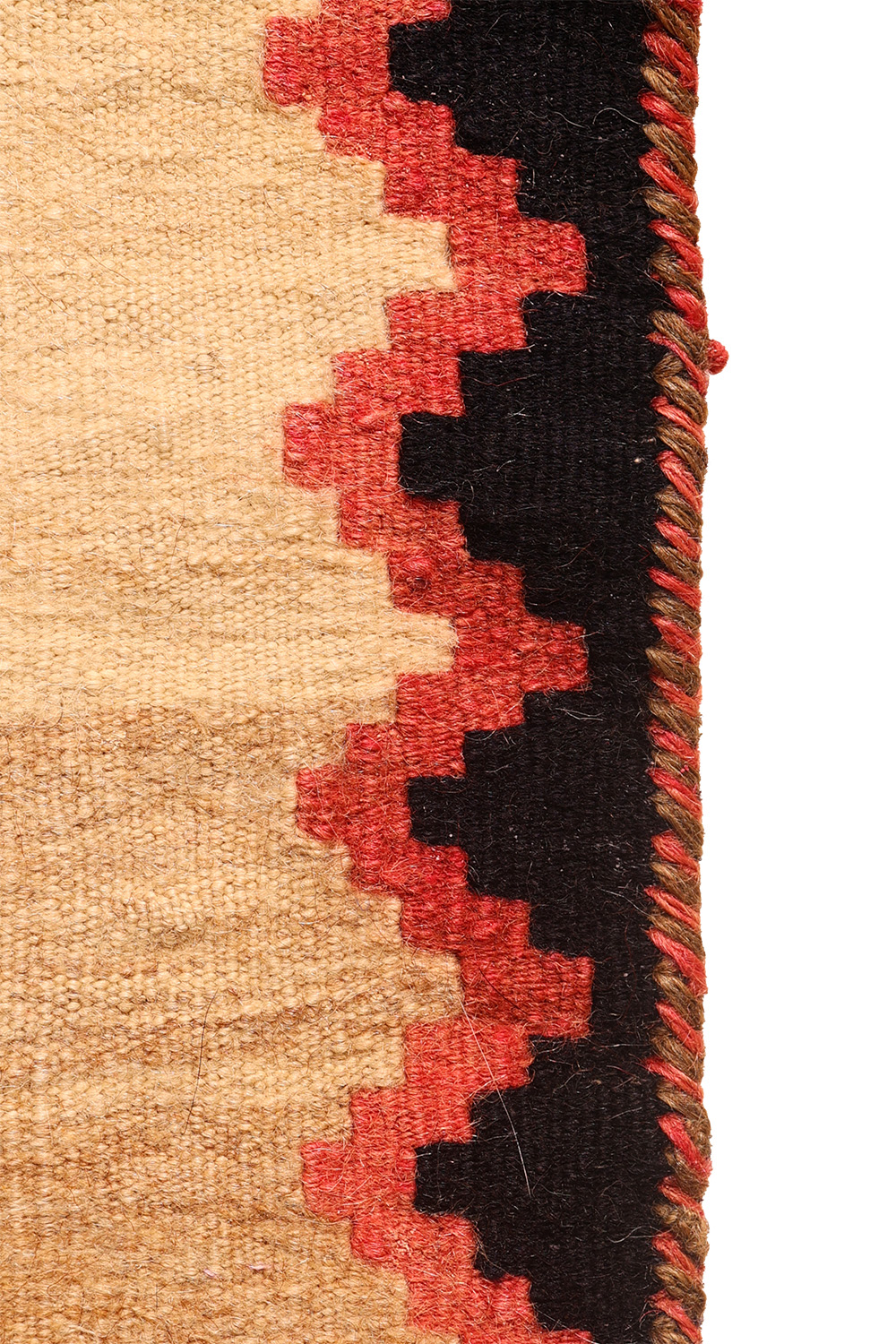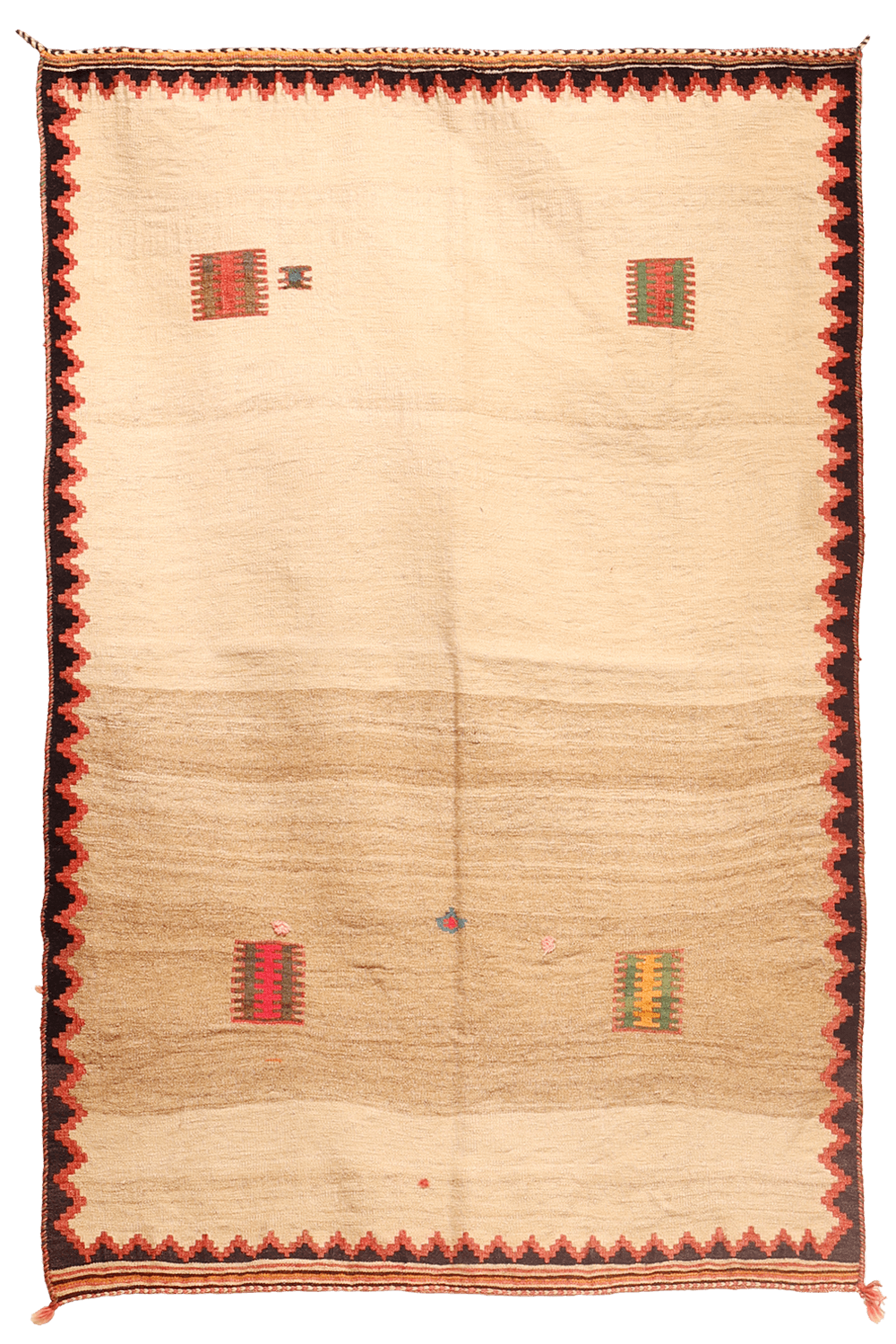Finely Woven Semi-Antique Sofreh Kilim
This exquisite semi-antique sofreh kilim—traditionally used for bread-making—showcases exceptional craftsmanship and quiet beauty. Woven with undyed wool in varying shades of white, ivory, beige, and grey, the piece features a stunning abrash (natural colour variation), adding depth and texture to its minimalist design.
The serene simplicity of the field is subtly interrupted by the addition of four “comb” motifs—ancient symbols of purity—along with two smaller, delicate designs. Refined and harmonious, this sofreh is a testament to understated elegance and skilled weaving.
Material: 100% hand-spun sheep wool
Size: 170×115 cms
Origin: Qashqai tribe, Iran
Date of weaving: 1960s
Sofrehs take their name from the Farsi (Persian) word for cloth and are used for several functions connected with preparing and eating food. Eating cloths are normally referred to simply as sofrehs and vary enormously in size-from small, rectangular mats for personal use to extremelly long, narrow runners for communal eating. They are woven in several standard techniques, including alternating bands of kilim and pile rug, and produced by a number of nomadic and tribal weavers in Iran, Afghanistan, Central Asia and to a lesser degree, elsewhere.
Turkic-speaking pastoral nomadic tribal groups began entering central and southern Iran during the eleventh and twelfth centuries.The Qashqai, as a large tribal unit, dates back at least to the early eighteenth century, when some Turkish(Turki)-speaking tribal groups in the region existed under the name Qashqai.
Qashqai kilims are best known for their boldness and and freedom in the way the pattern is drawn. An aesthetically pleasing geometry, the fineness of their wool and their clear, strong colours combine to ensure their reputation as superlative examples.
1 in stock
| Weight | 3.2 kg |
|---|
